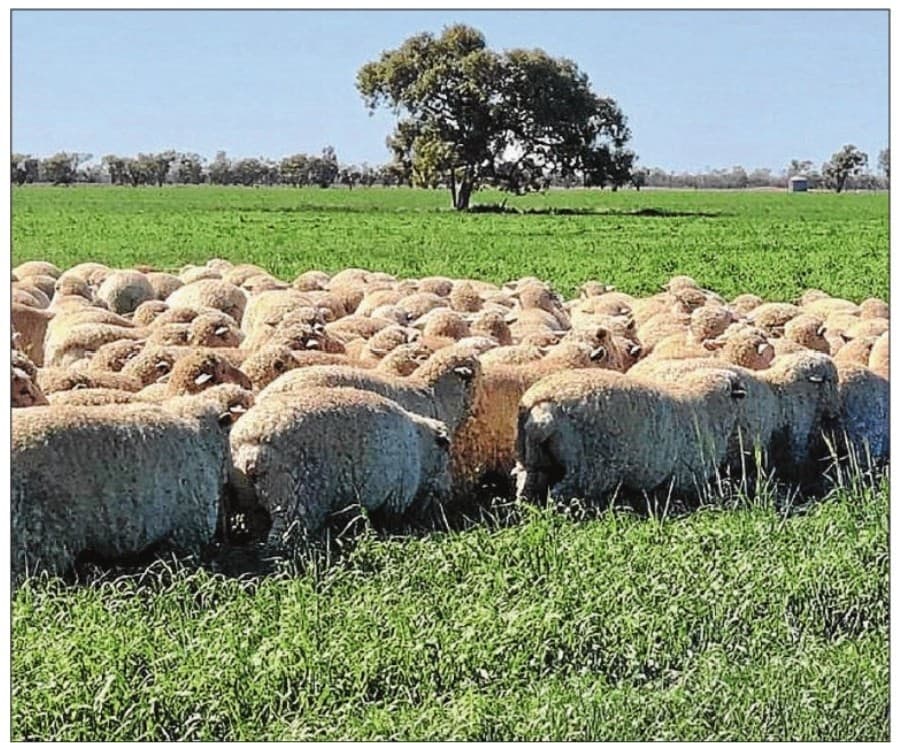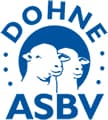Top lambs, wool at Aberfoyle
The Land BY KYLIE NICHOLLS
THE early growth, heavy carcase weight and easy-care traits of the Dohne breed are helping the Currey family achieve strong results for their quality lambs and wool.
Based near Walgett in the state’s north-west, Mark Currey and his parents Jim and Sue, made the change to Dohnes more than 10years ago.
Although they are still re building numbers after the drought, the family currently runs 4000 self-replacing Dohne ewes as part of their mixed farming operation, Aberfoyle, which is spread across several properties at Walgett and Brewarrina, totalling 18,615 hectares.
The sheep are run along side a 3237ha broadacre cropping program which this season comprises wheat and faba beans.
“Given the volatility of the wool market at the time, we were looking for a more dual-purpose animal that was early-maturing with a heavier carcase,” Mr Currey said.
“We’ve done very well with our Dohne lambs, we are definitely getting an extra four to five kilograms on our carcases compared with when we were running Merinos.”
During the past few years, the Currey family have ramped up their breeding efforts, introducing electronic identification tagging technology to better monitor individual animal performance.
“We are collecting a range of data including their pregnancy status and fleece weight as a hogget.” he said.
“For the last three years, we have averaged six to 6.5kgs wool cut per head on the hogget ewes at an average of 18 to 20 micron, which I think is pretty handy.”
A long-term client of Macquarie Dohne stud, Mr Currey uses a combination of visual appraisal and Australian Sheep Breeding Values to select his rams.
“Confirmation and structure is critical and we are chasing quality wool that is soft to touch and less than 20 micron, with a good staple length,” he said.
“In terms of their ASBVs, eye muscle depth and clean fleece weight are important.” The ewes are joined for six weeks during March/April for an August/September-drop lamb and scanned to identify multiples.
“This year, the five and six year-old ewes averaged 155 percent and l60pc scanned in lamb.” Mr Currey said.
“We couldn’t get to the young ewes in time to scan for multiples, but the maidens averaged 93pc per ewe joined and the older ewes did 98pc.
“The year-on-year average marking rateis 125 to 130pc.”
The ewe are separated into single and multiple-bearing mobs so the ewes carrying twins can be given preferential treatment.
All the lambs are weaned in January, split into their sexes and moved onto high quality summer pastures and pulse stubbles to be grown out. If it is dry, the lambs will be weaned into an on-farm feedlot.
The wether portion is shorn in May and Mr Currey aims to have the majority of them sold before the end of July, over the hooks or through the prime market.
This season they averaged 62kg live weight at a dressed weight of nearly 30kg.
“I ran all the wether lambs through the auto-draft twice this year, once to get a base weight and then one month later.” Mr Currey said.
“Their growth rates averaged 240grams per head per day on natural pastures.
“The tops of the lambs were doing 300 to 350gram per day growth, their feed conversion rate is unbelievable.”
The ewe lamb replacements are classed with assistance from ADBA Classer James Koster, with a focus on structure, size and wool quality.











 Facebook
Facebook YouTube
YouTube Instagram
Instagram